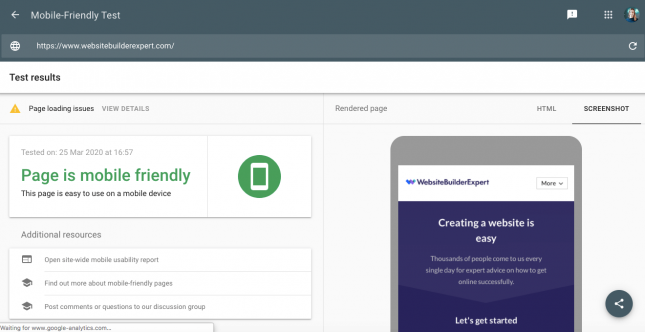0818 Work Insights
Your go-to source for the latest work trends, tips, and advice.
Mobile Websites That Make Your Thumb Dance
Discover the mobile websites that will get your thumbs dancing! Unlock seamless design and irresistible content for a stunning browsing experience.
5 Essential Features of Mobile Websites That Keep Users Engaged
In today's digital landscape, having a mobile-friendly website is crucial for maintaining user engagement. One of the essential features that keeps users coming back is fast loading speed. A mobile website should load in under three seconds, as studies show that 53% of mobile users abandon sites that take longer than this. Implementing strategies like optimizing images and leveraging browser caching can significantly enhance speed. For further reading, visit Google's PageSpeed Insights.
Another vital aspect is the intuitive navigation that simplifies the user experience. Mobile users often operate with one hand, so menus should be easily accessible and understandable. Implementing a responsive design ensures that the navigation adapts to any device, providing a consistent experience. Additionally, utilizing clear call-to-action buttons can guide users effortlessly through your site. To explore more about responsive design, check out this resource on Smashing Magazine.

How to Design a Mobile Website That Makes Navigation a Breeze
Designing a mobile website that prioritizes user experience is crucial in today's digital landscape. Start by adopting a responsive design approach, which ensures that your site adapts seamlessly to various screen sizes. Use a mobile-first design strategy, which means you build the mobile version of your site first and then scale up for larger screens. This can significantly enhance user satisfaction and ultimately improve your SEO rankings. Focus on creating a clean layout with ample white space to guide users effortlessly through your content.
Navigation is one of the key elements of a successful mobile website. To make navigation a breeze, consider implementing a hamburger menu for easy access to categories without cluttering your screen. Additionally, utilize breadcrumbs to help users understand their location within the site. Always prioritize essential links and make sure they are within easy reach of users' thumbs, as this greatly enhances accessibility. Remember, a well-structured, easy-to-navigate mobile website not only keeps users engaged but also encourages them to return.
Is Your Mobile Site Thumb-Friendly? Tips for Optimizing User Experience
In today’s digital landscape, ensuring that your mobile site is thumb-friendly is crucial for enhancing user experience. With the majority of users accessing websites via their smartphones, it's essential to design layouts that cater to touch navigation. Start by assessing your site's layout to ensure touch targets, like buttons and links, are adequately sized and spaced. Ideally, buttons should be at least 48x48 pixels to accommodate users of all dexterity levels. Moreover, consider implementing a responsive design that adapts your content to fit various screen sizes, making it easier for visitors to navigate your site regardless of the device they are using.
Another key aspect of a thumb-friendly mobile site involves streamlining interactions. Avoid overwhelming your users with excessive content or complicated forms. Instead, prioritize essential information and utilize collapsible menus or expandable sections to keep the interface clean. Utilizing gestures and touch-friendly navigation patterns can significantly improve the browsing experience. Finally, always test your site on various mobile devices to gather feedback on the usability of your design before launching to ensure that your visitors leave with a positive impression.